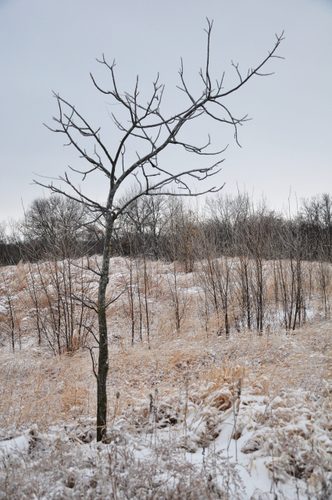
Have you ever stood in the prairie in the Lower Arb and imagined that you were seeing the land before European settlement, that it stretched in all directions, and that if you walked over the next hill, you might see a herd of bison?
This illusion is not accidental: restoring the land to pre-settlement conditions is one of the primary goals of current Arb management.
Restoring land to its “natural” state is a very recent development. Almost all of the Arb was farm and pasture until the 1970s, when students made the first attempts to transplant native prairie to a cornfield. This was the beginning of a complete change in Arb management, and was an indication of larger change in American society, a groundswell of environmental consciousness and the high point of wilderness activism. The Arb began changing from farms to forest and prairie, cultivation to restoration. However, this change in the role of the Arb, from food production to wildlife refuge, did not decrease human management of the land. In fact, changing the land back requires sophisticated and wide-reaching management.
There is a fundamental misconception that land changed by humans will revert to its “natural” state if simply left alone. This might hold true for a small clearing in the woods, or for a field in the middle of a prairie. However, human influence on the Arb has been so extensive that the land needs human interference to change back. For example, the nearest prairie remnant to the Arb is nine miles away. If the cornfields in the Arb were simply abandoned, it would be very difficult for native prairie seeds to reach the Arb on their own and establish themselves.
It’s important to remember that restoring nature requires management, even cutting down trees and setting intentional fires. Human interference is necessary to change landscapes that humans have shaped back to a more “natural” state.
-Emma Rapperport ’13 for the Cole Student Naturalists
Add a comment